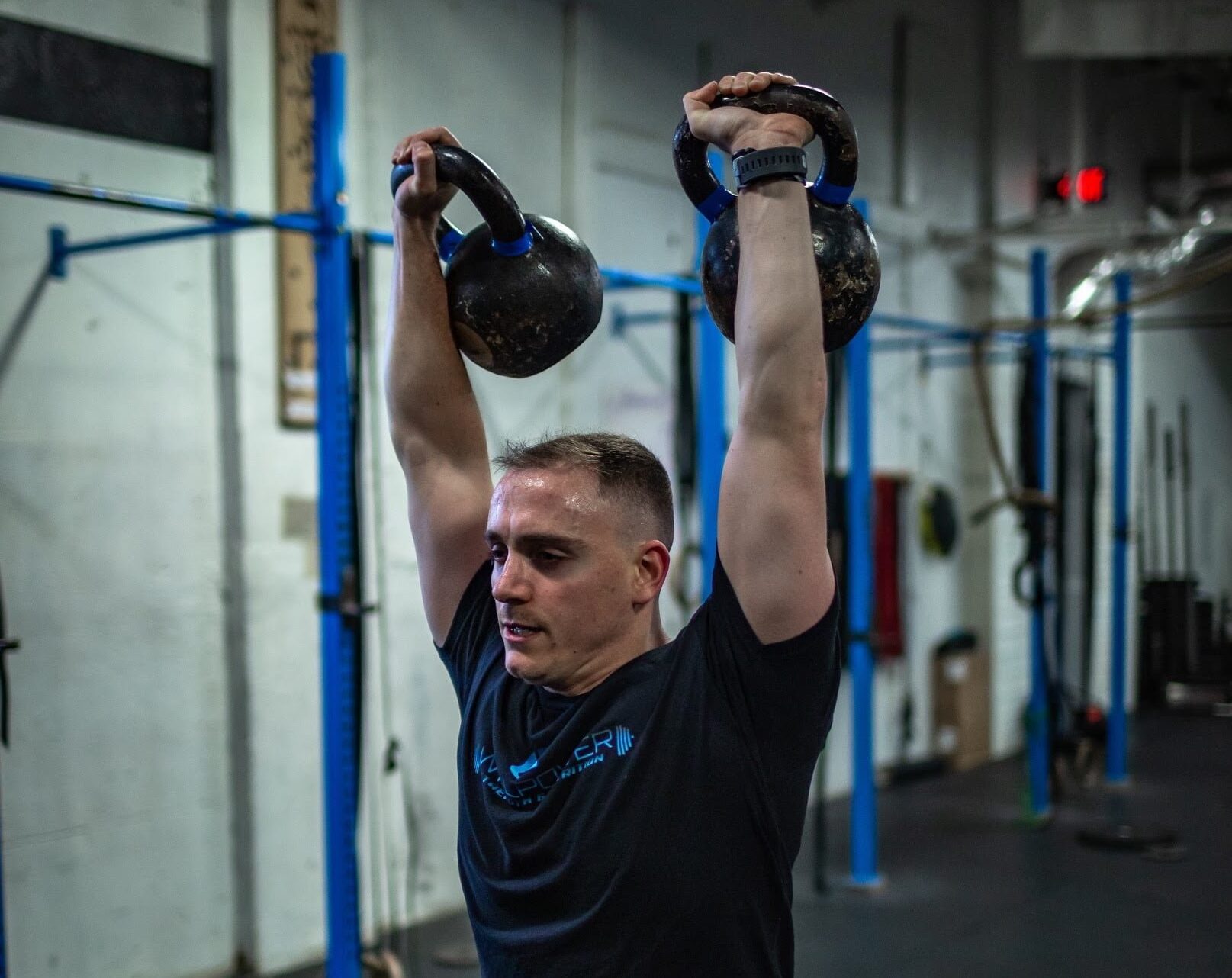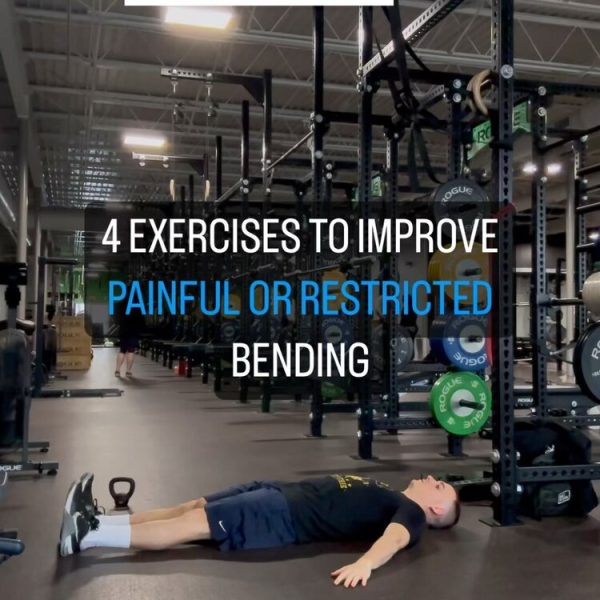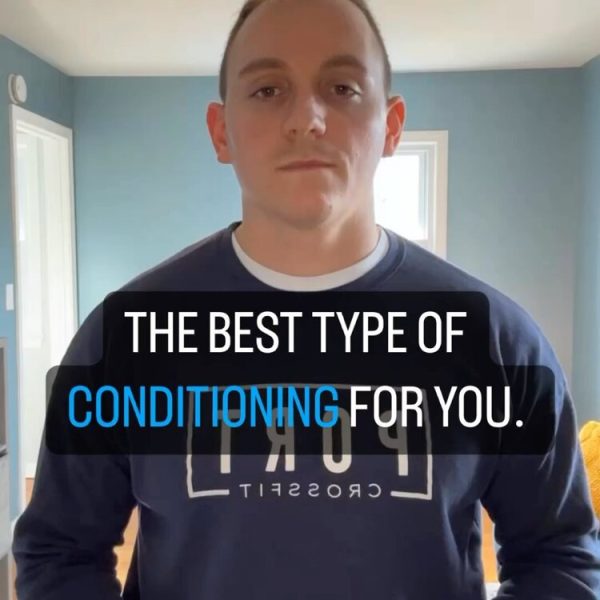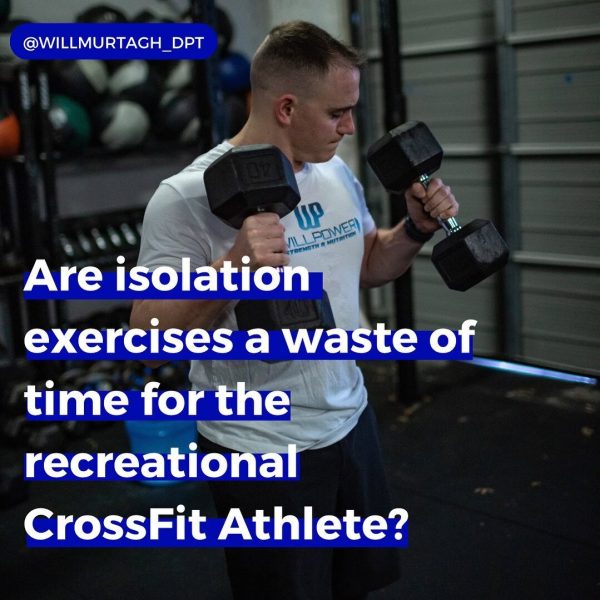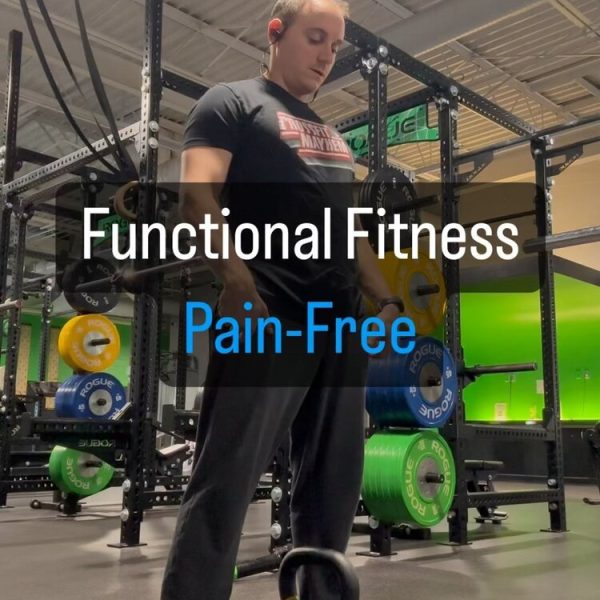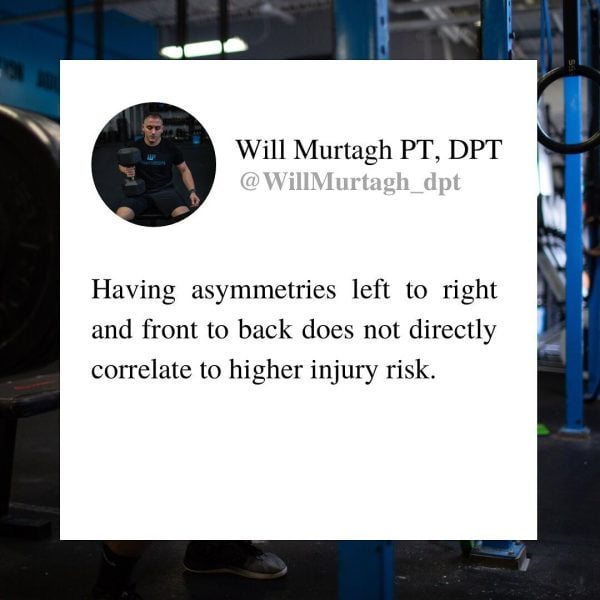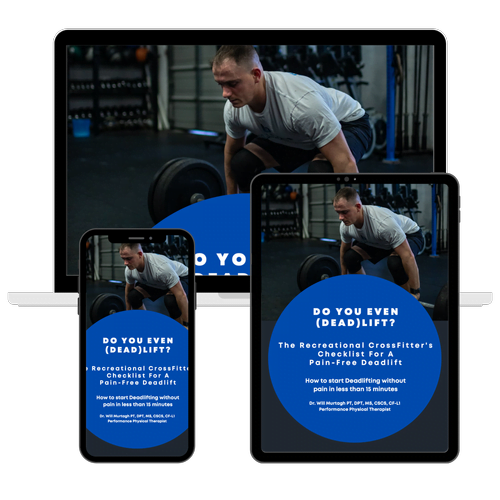Dr. Will Murtagh is a performance physical therapist and writer who helps Fitness Athletes elevate their fitness and train pain-free.
As an affiliate partner of various brands and sponsored content, WillPower Strength & Nutrition may earn commission on qualifying purchases
According to CrossFit HQ, over 15,000 CrossFit gyms worldwide and over 5 million people on the planet consider themselves “CrossFitters”. That is a whole bunch of people who are performing “constantly varied functional movements executed at high intensity” each and every day.
CrossFit is an excellent exercise program. I am a CrossFit participant myself and I believe it is a great way to get as fit as possible while meeting great people and enjoying the process of training. In addition to all of the health benefits that come with it. To date, I have yet to see better exercise programs like the ones that are labeled as CrossFit workouts. Which incorporate functional exercise and conditioning in the same session.
Current research supports the fact that these 5 million people plus are at no more risk of injury than any other fitness endeavor. But, just like any other fitness training program that does not mean that the risk is zero, and given my experience working with CrossFitters specifically over the last 5 years in my 1:1 Pain-free Performance Program I believe there are steps each and every CrossFitter should take to fortify their bodies, optimize their joint health and avoid orthopedic injuries so that they can keep training long term and put themselves in the best position possible to reach their health and fitness goals or compete at the highest level – whichever they so choose.
Joint pain in CrossFit or any strength & conditioning program is common especially when you are pushing the envelope with heavy weights and the paces that CrossFit Athletes are moving at in metcons.
The most common complaints Physical Therapists get from Crossfit Athletes regarding joint pain more than anywhere else on the rest of the body are knee pain, lower back pain, and shoulder pain.
EQUIPMENT YOU NEED TO PUT THIS POST INTO PRACTICE
Training Equipment
Training Accessories
Training Shoes
Physiology of Keeping Your Joints Healthy
The major joints of the body such as the shoulder, elbows, wrists, spine, hips knees, ankle etc are all considered “Synovial Joints”.
A Synovial joint is one that contains a joint capsule with a synovial membrane, a cavity within the joint that contains synovial fluid, and one that possesses Hyaline cartilage over the ends of each bone that make up the joint.
Keeping your joints healthy is about finding a balance between giving the joint what it needs and not over stressing the joint where the breakdown occurs. Joint nutrition comes primarily through movement to promote synovial fluid production but not so much stress that excessive or rapid breakdown occurs.
Given the high repetition and high loading of CrossFit, it can be a challenge to find this balance.
But that is what today’s blog post is all about. I am going to go over the 10 most important tips I can give as a Physical Therapist and Fitness coach to help CrossFit Athletes avoid joint pain so they can keep showing up to the gym and training hard on a daily basis.
By following these tips you can avoid the most common injuries that CrossFit Athletes face without having to spend hours in Physical Therapy after the fact.
Get my FREE E-Book “The CrossFitters Checklist For A Pain-Free Deadlift
1. Warm Up Properly
I think this goes without saying and before you roll your eyes at me just hear me out. The importance of a warm-up cannot be overstated for many reasons. Outside of the obvious performance improvements of a warm-up, they are crucial for preventing joint pain in CrossFitters.
An adequate warm-up will provide the ability to perform movement in a low-load and low-intensity environment where the joint can essentially “wake up”. This low-intensity movement will allow synovial fluid production to begin and for blood to start flowing to the joints that are about to be stressed.
I love utilizing either the Assault Bike or the Concept 2 Erg Rower in my warm-ups for clients as both of them provide an easy way to incorporate the most important joints in CrossFit, they are specific to what you do in CrossFit and they are excellent at raising your core temperature in preparation for exercise.
A good warm-up will also help improve the joint’s mobility and the muscles around the joint’s flexibility. This will allow each joint to move through its full range of motion so that one joint is not compensating for another one above or below it and causing undue stress on the joint.
When programming warm-ups for my clients inside of my 1:1 Pain-Free Performance Program, I will typically use a timed format to minimize wasted time and add a cardiovascular component to it. As well as using “Controlled Articular Rotations” or CARS which are quite literally specific movements of each joint that bring the joint through its full range of motion with the intent of promoting synovial fluid production and increasing joint motion or “space”.
2. Prioritize Form and Avoid Poor Technique
Joint pain in CrossFit Athletes can occur from a variety of factors but the one I see the most undoubtedly has to be a breakdown in movement execution and poor technique. I am not saying the CrossFit workouts promote poor form since form breakdown is seen in any of the recent fitness trends I have witnessed during my time in the fitness space.
But, I am saying that CrossFitters are no better or worse when it comes to prioritizing their form during their training sessions and everyone should work towards great movement.
When form breaks down and poor technique is used due to weights that are too heavy or when clients have restrictions in joint mobility there are forces placed on the surrounding joints that they may or may not be able to tolerate.
This is called the joint-by-joint approach which describes the concept that the joints in the body alternate between stable and mobile joints. An example of this would be the leg where the hip is a mobile joint given its wide availability to move in different directions, followed by the knee which is restricted to flexion, extension, and rotation and then lastly the ankle which like the hip, has a wide variety of motions available to it.
If the hip or ankle were to become stiff causing improper form during movements such as squatting then the knee which is not designed to move like a hip or ankle would be forced to pick up the slack and ultimately lead to knee pain or any number of reasons.
A simple YouTube search of CrossFit HQ can provide movement demos that cleanly identify their points of performance and help give you a beacon to work towards as you refine your movement patterns.
3. Gradually Increase The Intensity and Volume of The Training Program
I have written about this concept pretty extensively before which can give you an idea as to how important it is. You can check out this previous blog post “4 Principles For “Easing Back” Into Training After Time Off” which touches on how to do so in more detail.
But to review, gradually increasing the volume and intensity of the training that you are doing can help prevent joint pain as CrossFit Athletes because it allows your body to adapt to the forces being placed on it in a linear fashion and acclimate to heavy weights and repetitive use.
Most if not all of the most common injuries will occur when you do too much, too fast, and too soon. For example, going from 1 session per day and 5 sessions per week and then deciding to jump to two a day and 10 sessions per week overnight because the top CrossFit Athletes in the sport do so without critically assessing your current training loads.
Or, deciding that you are going to max out every time you lift because you only get to train twice per week and want to get the biggest bang for your time each session.
Or, choosing to forego rest days because you need to train every day to feel like you did something that day.
All three of these scenarios are a fast-track ticket to some sort of joint pain in the near future. The better approach is to detach from how much weight is on the bar initially and follow a progressive overload approach to your training. Start slow and increase load week over week adding a little more weight each time adding more exercises or more training days once you can prove that you are able to recover from the current training loads.
An easy way to track if you are recovering from your sessions is to monitor grip strength using a Handheld Dynamometer.
If you find that your grip strength is decreasing over time then you can determine with relative accuracy that you are not recovering and you should take a rest day or assess how much you are doing in the gym week to week.
4. Incorporate Mobility Into Your Exercise Program
There is a principle that I adhere to emphatically as a Physical Therapist because I know how important it is to keep my 1:1 Pain-Free Performance Program clients healthy and in the gym training that is simply “mobility before stability”.
This implies that before you train the stability of a joint or the strength of the muscles around it. You need to ensure that the joint has as much range of motion as you need from it. In CrossFit, the amount of motion you need from your joints is essentially all of it.
When you rush to train the stability and strength of a joint prior to achieving full range of motion you are developing strength on top of dysfunction which only serves to strengthen the restriction in motion.
Fortunately, you can develop joint range and strength together with the correct kinds of programming. You can do so by utilizing tempo or eccentrics in your strength training where the emphasis is on slowly lowering the weight. This technique can actually add more sarcomeres to the muscle which essentially makes the muscle longer and not only allows it to stretch further but also be strong within that range.
You can also utilize CARS in your training as mentioned above which serves to increase the amount of available range of motion but also develops stability and control of that motion throughout the entirety of the movement.
There does come a point where mobility needs to be trained in isolation and that is where I love using self-joint mobilization techniques with the use of a band.
A few mobilization drills that I use frequently with the use of resistance bands include Banded Shoulder Distraction, Lateral Hip Banded Distraction, and Banded Posterior Ankle Distraction
Incorporating both joint mobility exercises like these and the joint strengthening techniques mentioned on a daily basis can help optimize your joint motion so that you can not only increase the range available to you but also build strength within that range.
5. Strengthen The Surrounding Muscles of the Shoulder Joint, Knee Joint, Hip Joint, and Lower Back
Now that we discussed improving your mobility of the joints that need to be mobile we can discuss developing strengthening joints so that they can withstand the demands of CrossFit.
The primary joints that will suffer from pain in CrossFit are going to include the shoulder joint, the lower back, the hip and the knee.
If we clear mobility in that each one of these joints is not being impacted by restrictions in range of motion at the specific joint itself as well as above or below it, we can set our sights on strengthening the muscles surrounding each one.
I am also assuming that these joints get plenty of work in your day-to-day training and just need extra accessory exercises to bolster their resilience.
For the muscles of the shoulder and the hip, more often than not you will want to focus on the muscles responsible for external rotation of that joint as these muscles are ones that will be primarily responsible for maintaining joint alignment and centration as well as providing stability to that joint.
For the shoulder, these will be the muscles of the Rotator Cuff and Scapular Stabilizers and for the hip joint, these will be the muscles of the Glutes and the smaller external rotation muscles of the hip.
If you’d like an in-depth analysis on how to train the surrounding muscles of these joints, you can check out my post titled “The 20 Best Physical Therapy Exercises To Improve Posture”.
For the lower back, I love the use of the McGill Big 3 exercises as well as Front Planks or Side Planks, and loaded carries.
These exercises can help train lumbar stabilization and core stiffness which is essential when lifting heavy weights such as during Squats and Deadlifts, two common Crossfit exercises.
When isolating knee joint strengthening, targeting the quad and hamstring will be the most beneficial using exercises like Banded TKE, Seated Knee Extension, and Physioball Leg Curls.
Grab your Dumbbells, Bands and Physioballs to easily incorporate these into your workouts on a daily basis.
6. Use The Proper Equipment When Needed
I will always advocate to all of my clients that the use of assistive equipment such as knee or elbow sleeves, belts, and wrist wraps should come after they have spent time developing the mobility and stability of their joints. As well as after they have decided that their goals are performance-based and not health and longevity.
If your goal is to win then I definitely recommend using equipment to allow you to lift heavier, faster and longer. But, if you simply want to be able to move without pain and be active and thriving into old age then you should ditch the equipment.
You can check out more about this concept in my blog post “4 Ways To Transition From Training For Sport To Health”.
But, if you decide that you do want to push the envelope when it comes to your performance in CrossFit then the equipment you will need will be those that provide support to the most commonly injured joints. Which were mentioned above in tip number 5.
These pieces of equipment would include a weightlifting belt, Knee Sleeves, Wrist Wraps, and proper footwear.
Personally, I think the best footwear for CrossFit training is going to be either the Reebok Nano’s, Nike Metcons, or TYR.
If you need help determining which belt is best for you then definitely go check out my blog post titled “The 6 Best Weightlifting Belts For CrossFit & Weightlifting”.
7. Seeking out Help From Physical Therapists When Needed
Now I may be biased but I believe the single most important thing CrossFit Athletes can do to prevent joint pain (and improve their performance) is to work with a professional coach.
The reason I believe so strongly in that is that working with a coach allows fresh, objective and unbiased eyes to be looking over your program design and helping you work through any and all issues that you may be having.
Everything from the actual X’s and O’s to your training to make sure intensity and volume is being monitored and progressed appropriately. To an individualized nutrition prescription to make sure your weight is where you need it to be, you are recovering from your workouts, and your diet is not inflammatory in nature. As well as prescribing lifestyle modifications to ensure that your lifestyle is in line with your goals and that you aren’t simply living to train.
Unless you are competing at the CrossFit Games, you want to be able to enjoy your time outside of the gym without dealing with joint pain that is caused by what you do in the gym.
All of this and more are provided in my 1:1 Pain-Free Performance Program where I help my clients optimize their fitness and reach their fitness goals in 90 days without having to deal with frustrating injuries in the gym.
Through individualized training, nutrition and lifestyle prescriptions coupled with daily support, weekly check-ins, and monthly consultations you are essentially guaranteed to avoid pain and injury and easily reach your fitness goals as we put the tips I mentioned above into practice.
I hope these tips have empowered you to train hard in the gym without having to worry about developing joint pain as a CrossFit Athlete.


